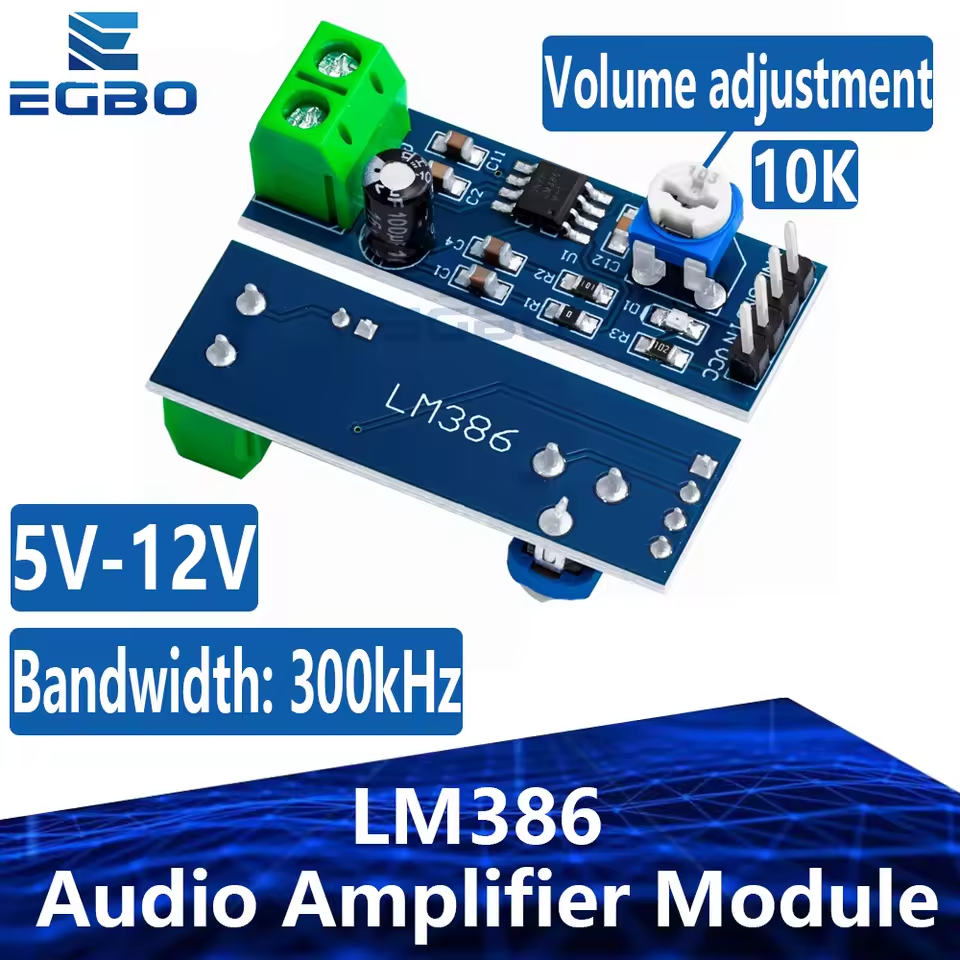If you’ve ever wanted to boost the sound from a small speaker without diving deep into complex audio circuits, the LM386 audio amplifier board is your new best friend. This little board is one of the most beginner-friendly amplifiers you can get — perfect for radios, MP3 players, Arduino projects, or any small audio experiment.

🔊 What Is the LM386 Audio Amplifier?
The LM386 is a low-voltage power amplifier chip designed for audio applications. It takes a weak input signal — like what comes out of your phone or microcontroller — and boosts it enough to drive a small speaker. Most boards using the LM386 run easily on 5–12 V DC, making them ideal for portable electronics.
🧩 Typical Features
- Operates from 4 V to 12 V DC
- Output power around 0.5 W to 1 W depending on supply voltage
- Built-in gain control (usually adjustable up to 200×)
- Compact board with input, output, and power terminals
- Optional volume control potentiometer
⚡ How It Works
The LM386 amplifies the input audio signal through its internal transistors. You feed a small signal (like from an Arduino DAC, audio sensor, or phone output) into the input pin. The chip boosts it and sends a stronger version to the output — powerful enough to drive an 8-ohm speaker. Some boards also include a capacitor and resistor network for tone shaping and noise reduction.
🛠️ Wiring the Board
- Connect VCC and GND to your 5–12 V power source.
- Audio input → the IN+ terminal (ground goes to GND).
- Speaker output → connect to the OUT+ and OUT– terminals.
- Optionally adjust the gain potentiometer or add a volume control knob.
It’s that simple — no complex setup, no special tuning. You’ll be amazed at how loud and clear your audio becomes with such a tiny module.
💡 Project Ideas
- Boost audio from an Arduino music player
- Build a portable mini speaker
- Amplify sound from a microphone sensor
- Create your own intercom or sound effect board
Conclusion
The LM386 audio amplifier board is a classic example of “simple but effective.” Whether you’re learning electronics or adding sound to your next DIY project, this tiny board delivers solid audio performance without any fuss.